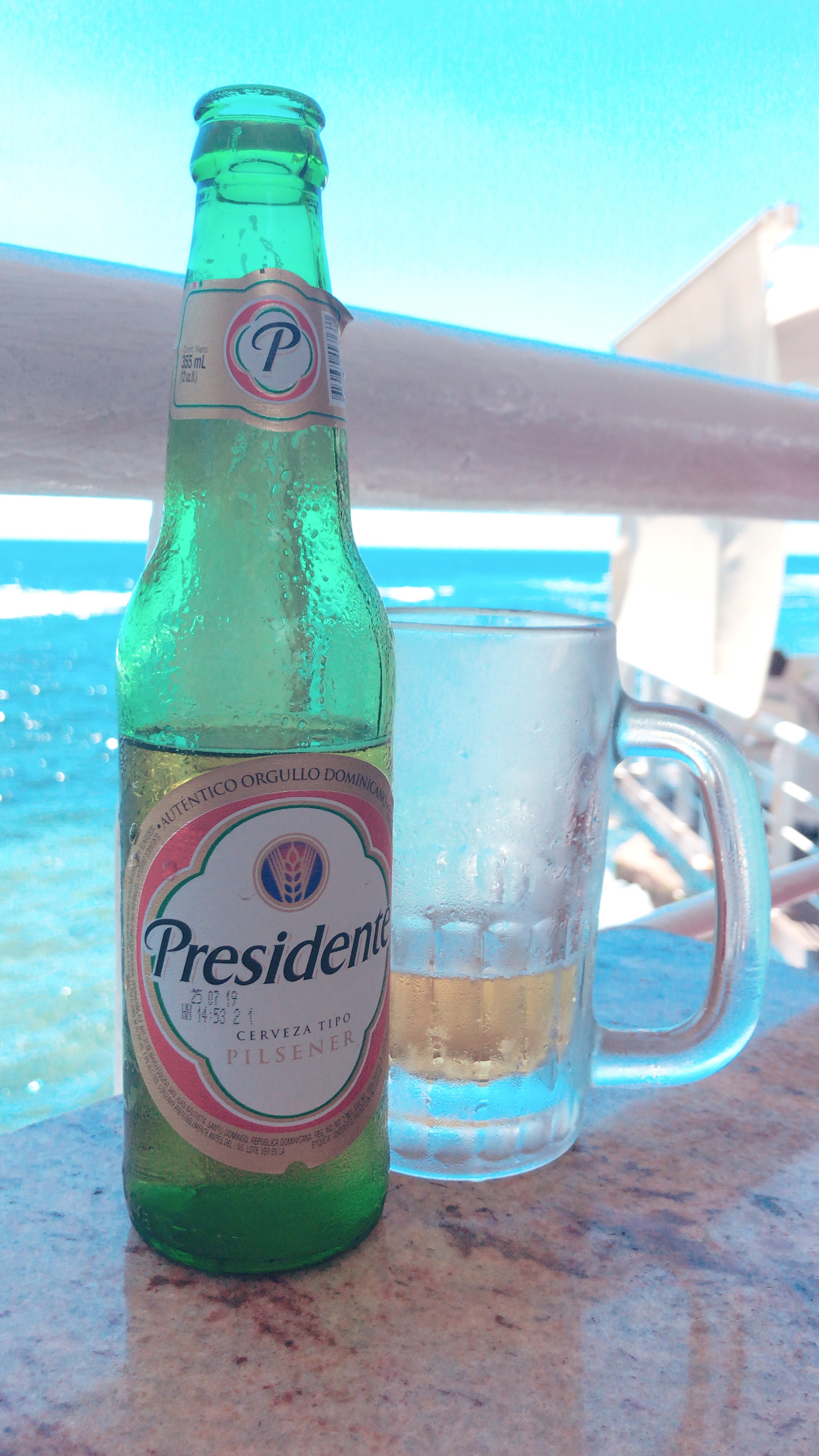Lost in the Dominican Republic: A glimpse beyond the all-inclusive resorts
I am a proud native of the Dominican Republic. While many people know the DR for its large, all-inclusive resorts and beautiful beaches, this only scratches the surface of what the country has to offer. Beneath the white sands and turquoise coastlines, lies a country that is bursting with culture and filled with friendly people. The smells of delicious foods like ‘sancocho’ and ‘habichuelas guisadas’ fill the streets and the rhythm of merengue flows through our veins.
*‘Sancocho’ is a hearty, thick traditional Dominican stew filled with lots of flavour and includes different meats and vegetables. ‘Habichuelas guisadas’, or ‘stewed seasoned beans’, is a Dominican staple, often served with rice and seasoned to perfection!*
The Dominican Republic is a small country that shares the island of Hispaniola with its neighbouring country of Haiti. The country has a wide range of landscape: From desert-like terrain and tropical rainforests, to mountains giving way to beautiful beaches. The country has something for everyone.
Most people I know, visit the DR for their all-inclusive resorts but there is so much more to be seen. Don’t get me wrong, I enjoy the resorts too. In fact, every trip I plan to the DR always includes a few days of rest and relaxation in one of the many beautiful resorts. However, beyond the walls of these hotels, there is so much more to see and do, and much that remains to be seen. Here are some of my top picks.
Know before you go:
Currency: Dominican Peso
Capital: Santo Domingo
Language: Spanish (most tourist attractions, hotels, restaurants and stores will have someone that speaks English)
Weather: Generally hot with tropical temperatures throughout the year
Santo Domingo: Zona Colonial
Santo Domingo is the capital of the Dominican Republic and my city of birth. The city is one of the oldest cities in the North America, with some of the buildings dating back to the 1500’s. The ‘Zona Colonial’ (which translates to Colonial Zone) is the old historic part of the city and the oldest European settlement of the Americas. It was discovered by Christopher Columbus and his younger brother, Bartholomew in 1502 and has been declared as a World Heritage Site by UNESCO. The neighborhood is filled with European architecture and old world charm. There are many hotels, stores and restaurants throughout the neighborhood and it is the perfect place to explore and get lost in.
Eat: Cafeteria Restaurantre El Conde is located on the main strip of Calle Conde. Want to try something delicious and different? Ask for a Mofongo. I love Mofongo and most restaurants (including this one) offer this delicious Dominican dish. The dish consists of mashed fried green plantain and pork rinds, although there are several variations. It typically comes with a delicious garlic broth to drizzle on top and to add a little flavour. Whenever I visit the DR, this is my go-to meal. Wash it all down with an ice-cold Presidente beer and you are gold!
Note: The Mofongo dish derives from our sister country of Puerto Rico but has been adopted and recreated in different ways in the Dominican Republic
Stay: Hodelpa Nicolás de Ovando: This hotel is located in the heart of Zona Colonial on a perfect cobblestoned street. From the looks of the exterior, you would think you were walking into a museum. The hotel was the original home of Nicolas de Ovando, a governer of Hispaniola from 1502 to 1509. The inside courtyard gives off major ‘Spanish hacienda’ vibes, with its exposed walls and beautiful water fountain.
Do: Rent a bike at Zona Bici Bike Rental. One of my highlights when visiting the Zona Colonial recently was renting a bike and exploring the area. Nothing compliments an old European setting, than a beautiful, comfortable, vintage bike. I rented a bike for a couple of hours and took in all the sites in the Zona Colonial. I have included a list below to all of the beautiful sites to visit.
Ruins of the San Francisco Monastery – Beautiful ruins of an old monastery that dates back to the 1500’s.
Calle El Conde – Busy main street filled with shops and restaurants. Perfect for an afternoon stroll.
Fortaleza Ozama – Overlooking the Ozama river, this fortress looks like a beautiful castle and served as the entrance to the Colonial Zone.
Alcázar de Colón – A beautiful palace that served as the original home of the son of Christopher Columbus.
Miches
Miches is located in El Seibo province on the North East side of the island, and I had never been until earlier this year. In fact, I had never even heard about it until my most recent trip to the DR. The area is not necessarily booming with tourism, and to me, that was an added bonus. This hidden gem, is a perfect paradise with very little people in comparison to the resort towns. Miches is surrounded by mountains and stunning beaches.
Do: Playa Esmeralda (Emerald Beach) – I have seen my fair share of beautiful beaches all over the world and Playa Esmeralda ranks high on my list. Playa Esmeralda or ‘Emerald Beach’ is exactly what the name describes. A pristine, untouched beach surrounded by emerald water and adorned with picture-perfect palm trees. While the path that leads to the beach is a bit windy and treacherous, I assure you it is well worth it. When I visited with my family, there was literally not a single person in sight. It was magical.
Do: Montaña Redonda (Round Mountain): If you’ve ever wondered what it would be like to be a Harry Potter character, then look no further. Montaña Redonda is a beautiful mountaintop that overlooks the North Eastern coast. The panoramic views are breathtaking. There are hammocks and benches where you can relax and take in the views. The mountain is well known for taking the perfect insta-worthy shot on one of their several swings that make it look as though you’re soaring into the sky. For the Harry Potter fans, you can channel your inner Hogwarts character on one of their many brooms, but it will require a bit of jumping to get the perfect shot. Instagram photos aside, this place is truly enjoyable and worth the visit.
Things got a little Harry on Montaña Redonda
Los Haitises National Park
Los Haitises National Park is perfect for nature lovers. It is a national park located on the North Eastern coast and consists of large limestone rock formations towering over the ocean, hidden caves and mangroves. There are many tours available by boat that can be arranged through hotels. The number of tourists allowed on any given day is limited in order to maintain the park’s conservation. The most beautiful part of this experience is exploring the caves that include pictographs from the Taino Indians, the indigenous people of the Dominican Republic. It’s common to spot a wide range of birds and even dolphins.
Fun fact: Parts of my childhood favourite film, Jurassic Park, were filmed in Los Haitises.
One of several caves in Los Haitises National Park
Legend has it…
During your tour of the Haitises, you might hear old folklores about ‘la ciguapas’ (SEE-GUAP-AS), who live in the mountains and caves of the Dominican Republic. The ciguapa is a mythical Dominican creature that is often described as a beautiful, seductive woman with long flowing black hair. Her most distinguishing feature are her backwards feet. Our tour guide explained that according to Taino legends, an indigenous Taino princess who was overcome with grief from the death of her lover (chief Caonabo), took refuge in one of the caves in Los Haitises. In order to confuse others on her whereabouts, she walked backwards into the cave so that her footprints lead people elsewhere. Some say that this is where the Ciguapa legends derive from. I remember hearing stories about these creatures as a child and until this day, I find the tales amusing.
Photo c/o: dominicancult.blogspot.com (Ciguapa, drawing by Felix Rosario, c. 2016-2017)
Stay: Paraíso Caño Hondo – A charming yet simple eco lodge with unique large stone rooms overlooking the beautiful grounds. The lodge has a large pool surrounded by tropical trees and includes a waterfall; perfect for an afternoon dip after a tour of the national park.
Afternoon dip in the pool
Jarabacoa
Jarabacoa is located in the province of La Vega and is well known for its eco tourism. Surrounded by lush mountains, the town is known as the ‘cottage country’ for Dominicans looking for a quick escape from the city. To many, this area still remains obscure. Jarabacoa is surrounded by rivers and waterfalls, and is home to the tallest mountain peak of the Dominican Republic, Pico Duarte. The area is known to be a hub for adventure seekers, offering extreme sports with nature as the backdrop. According to Wikipedia, the name Jarabacoa comes from the native language meaning ‘land of waters’. Often coined, ‘the city of eternal spring’, Jarabacoa is known for its mild, tolerable weather in comparison to the much hotter weather that the rest of the country often experiences.
Stay: Rancho Baiguate. Rancho Baiguate is a small eco hotel with 27 rooms in the valley of Jarabacoa. The hotel includes a restaurant that offers typical Dominican food throughout the day. The hotel also offers many fun activities and excursions such as horseback riding, repelling from waterfalls, and rafting. During my stay, I opted for a horseback ride to a nearby waterfall which made for the perfect afternoon activity.






















